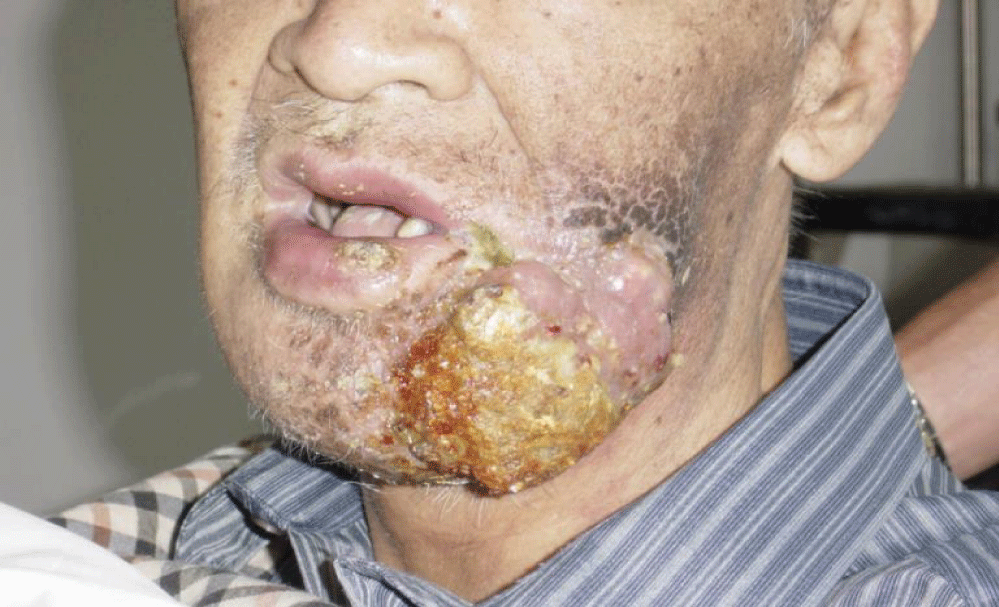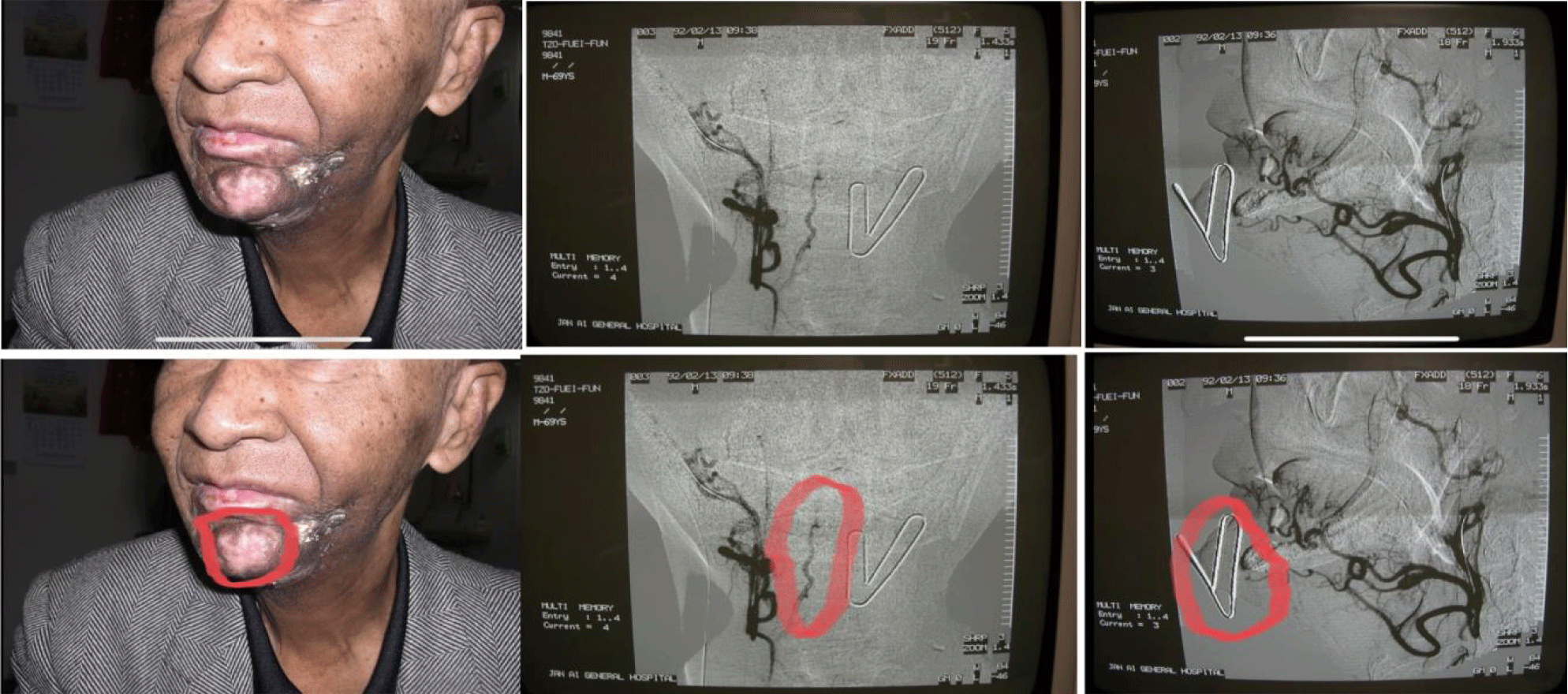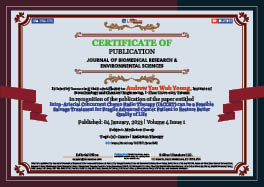Medicine Group . 2023 January 04;4(1):005-007. doi: 10.37871/jbres1642.
Intra-Arterial Concurrent Chemo Radio Therapy (IACCRT) can be a Feasible Salvage Treatment for Fragile Advanced Cancer Patient to Restore Better Quality of Life
Andrew Yau Wah Young1*, Cheng Yo Yen2 and Chil Hsin Hung1
2E-Da Hospital, Taiwan
- IACCRT
- Head & neck cancer
- Quality of life
Abstract
Combine modality anti-cancer treatment, Concurrent Chemo-Radio Therapy (CCRT) is a recommended approach for relatively resistant tumor in clinical oncology. But it is relatively more toxic to patient, and severely disrupt patient’s quality of life due to systemic side-effects causing by intravenous cytotoxic drugs delivery, especially for those fragile advanced cancer patients. Intra-arterial infusion chemotherapy is another option for CCRT because of not only a better tumor respond documented, and also bonus a better quality of life improvement.
We demonstrated an advanced buccal cancer patient who had been heavily treated, but rapidly recurrence head and neck tumor for salvage treatment with Intra-Arterial Concurrent Chemo-Radio Therapy (IACCRT). Complete tumor respond was resulted, and also restored a very satisfactory gain on quality of life, ECOG had been improved from score 3 to 1. We concluded that IACCRT is a feasible treatment choice for fragile advanced cancer patient.
Introduction
Clinically malignant tumor treatment respond is proportional to anti-cancer treatment dose, either irradiation dose or cytotoxic drug dose in general. And combined modality treatment also showed a synergic effect [1,3] generally. For treatment of refractory tumor the above two policies, dose escalation and combine modality, are the general better choice [2] clinically. For fragile advanced cancer patient, poor performance status patient (ECOG score > 3), lesser suffering treatment should be prioritized. Intra-arterial chemotherapy can be more suitable than intra-venous chemotherapy for those fragile advanced cancer patients because of less systemic side-effect. We had demonstrated a successful salvage anti-cancer treatment choice (IACCRT) for far advanced cancer patient. The demonstrated patient not only resulted a successful complete remission of the targeted malignant tumor, and also bonus a better quality of life [4] was restored.
Method
- Patient arranged for interventional radiology for IA port catheter insertion in left external carotid artery [4] with catheter tip located on about 2cm distal end of carotid bifurcation position. Start IA chemotherapy on about 5-7 days after insertion.
- Arrange radiotherapy treatment planning during the preparing days.
- IA infusion cytotoxic chemotherapy with regimen: Bleomycin 15 mg + Etoposide 50 mg + Cisplatin [5] 30 mg add up to 300 cc solution with 0.9% Normal Saline, IA infusion for 6 hours, on D1 weekly for 4 weeks.
- Irradiation with 200 cGy fraction dose daily on D 1-5 weekly for 4 weeks with total dose 4000 cGy.
- Best supportive treatment for any possible distressing symptoms.
Case Presentation
- This 67 y/o male patient was presented for the treatment of rapid recurrent buccal cancer.
- Patient was brought to my OPD sitting in wheel-chair, weak-looking (ECOG score 3), with a bulging recurrent tumor on his left cheek just beside buccal angle. Residual skin burnt noted around the bulging tumor indicating the patient had just had radiation therapy not long ago. He complaint oral pain, and looked so desperate due to the rapid regrowing tumor.
- Trace back to patient’s disease history, he has been betel nut chewing for more than 30 years. Left buccal cancer was diagnosed in July/2002 at a university affiliated hospital. He received series of radiotherapy there until October/2002, but refused any surgical intervention.
- He was sent to my OPD in November with a recurrent tumor about 7cm in diameter. No palpable neck lymph node on further physical examination. And no spinal cord compression symptom noted though the patient was sent on wheel-chair. No family history of cancer reported.
Considering previous treatment failure, the patient was diagnosed with buccal cancer with local recurrence, and admission for further possible salvage treatment (Figure 1).
Treatment Course & Discussion
- Considering the patient’s general physical performance, Intra-Arterial Concurrent Chemo-Radiotherapy (IACCRT) was suggested due to much less systemic side-effect [4,5].
- Preparation procedure for the IACCRT as follow: 1) Send for interventional radiologist for IA-port catheter insertion on the lesion site, left external carotid artery [4]; 2) Radiation oncologist for further R/T treatment simulation and planning; 3) Scheduled treatment: (D1) IA-infusion cytotoxic chemotherapy with Bleomycin + Etoposide + Cisplatin [5] (BEP regimen) concurrent with radiotherapy (D1-D5) WEEKLY for 4 weeks.
- The whole treatment course was given very smoothly and successfully. Tumor shrinkage was also observed after one week treatment, and making the patient and family very convincing. No tumor bleeding noted through the whole treatment except painful mucositis probably due to radiation therapy.
- After the 4-weeks treatment course completed, patient was sent back home for Christmas, and arranged for next OPD followup after the Chinese Lunar New Year.
- On 13th February follow-up OPD, patient walked in (ECOG score 1) to my clinic and was noted completely tumor remission [4] with only a wound scar left. But awfully a neo-growth mass was noted on patient’s chin region. Straight-forwardly there must had some treatment being missed, either radiotherapy or cytotoxic chemotherapy. After checking the chin had been covered inside the radiation treatment port. We arrange an angiography through the original infusion IA-port, and diagnosed an insufficient arterial infusion [4] on the chin region, as the shown pictures (Figure 2).
Conclusion
When far advanced cancer patient with poor performance status, ECOG > 3, requesting for further anti-cancer treatment, restoration of patient’s quality of life is the paramount importance. Regional Intra-Arterial Chemotherapy (IACT) can be a better choice clinically because it gives a possible highest dose to the targeted tumor locally, and minimize any possible systemic side-effects. For the demonstrated refractory buccal cancer patient with local recurrence, combine modality treatment with local irradiation and IA cytotoxic chemotherapy also added on possible better quality of life, and resulted a very successful tumor remission. And even such a thought to be aggressive anti-cancer treatment the patient still kept up a satisfy quality of life improvement, ECOG score improved from 3 to 1. We may concluded that Intra-Arterial Concurrent Chemo Radio Therapy (IACCRT) can be feasible for fragile cancer patient. We also demonstrated poor arterial infusion may be the reason for treatment failure. Further clinical share is expected for the more goodness of fragile advanced cancer patients.
References
- Seiwert TY, Salama JK, Vokes EE. The concurrent chemoradiation paradigm--general principles. Nat Clin Pract Oncol. 2007 Feb;4(2):86-100. doi: 10.1038/ncponc0714. PMID: 17259930.
- Hennequin C, Favaudon V. Biological basis for chemo-radiotherapy interactions. Eur J Cancer. 2002 Jan;38(2):223-30. doi: 10.1016/s0959-8049(01)00360-4. PMID: 11803139.
- Chen Q, Zhang B, Dong Y, Mo X, Zhang L, Huang W, Jiang H, Xia J, Zhang S. Comparison between intravenous chemotherapy and intra-arterial chemotherapy for retinoblastoma: a meta-analysis. BMC Cancer. 2018 Apr 27;18(1):486. doi: 10.1186/s12885-018-4406-6. PMID: 29703164; PMCID: PMC5924469.
- Homma A, Onimaru R, Matsuura K, Robbins KT, Fujii M. Intra-arterial chemoradiotherapy for head and neck cancer. Jpn J Clin Oncol. 2016 Jan;46(1):4-12. doi: 10.1093/jjco/hyv151. Epub 2015 Oct 20. PMID: 26486825.
- Yoshizaki T, Kondo S, Wakisaka N, Murono S, Kitagawa N, Tsuji A, Nakashima M, Sanada J, Matsui O. Concurrent intra-arterial chemotherapy and radiotherapy for advanced laryngeal cancer. Ann Otol Rhinol Laryngol. 2009 Mar;118(3):172-8. doi: 10.1177/000348940911800303. PMID: 19374147.
Content Alerts
SignUp to our
Content alerts.
 This work is licensed under a Creative Commons Attribution 4.0 International License.
This work is licensed under a Creative Commons Attribution 4.0 International License.










